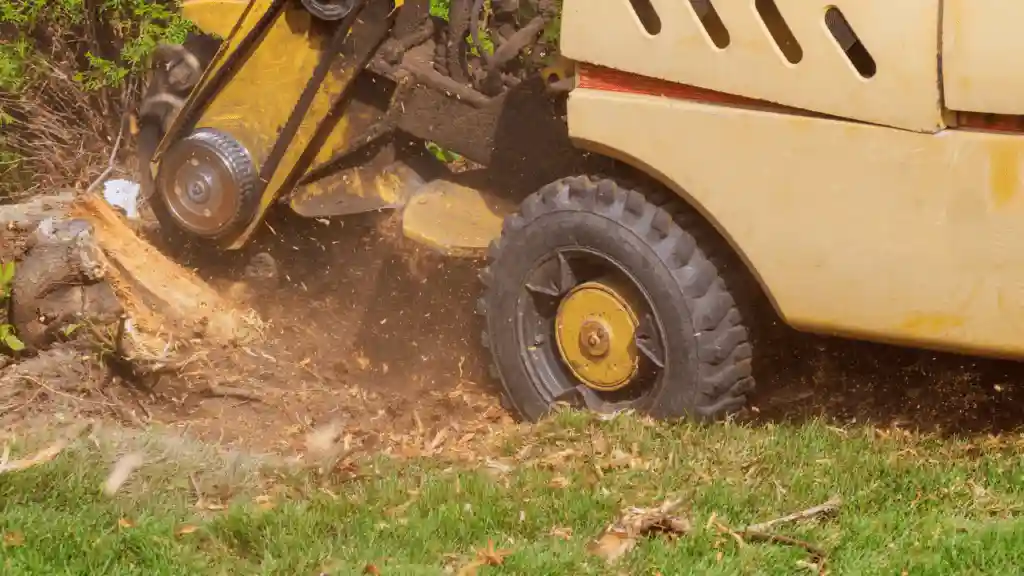A plant’s compact mass of roots and soil forms a root ball. If you want to remove a plant from one place to another, removing the root ball intact is a must. However, this is mostly done for younger plants. If a plant is grown too much, professional arborists can help in removing plants with intact root balls.

Here, we will give you a step-by-step guide on how to remove a plant’s root ball. Also, you will learn all the associated factors of root ball removal and when you should ask for professional help.
Why Should You Remove a Root Ball?
The root system is crucial for a tree’s survival. Therefore, it is important to let tree roots grow naturally. However, in many cases, tree roots can cause problems to crucial utilities and infrastructure.
Often plants are primarily planted in pots before being replaced in the ground. In that case, the entire mass of roots and soil attached to them are replaced from the pot to be planted in the ground.
Large tree roots can damage utility lines like sewer, water, or other underground lines. Also, storms can partially uproot a tree from the ground. In such cases, one can remove the root ball from the ground to plant the tree in another place rather than chop it off.
Carefully removing a root ball and planting the tree in another place can keep it alive and allow it to thrive. So, if possible, removing the root ball to plant the tree in another suitable space should be considered.
Required Tools for a Root Ball Removal
Without proper tools removing the root ball from the ground may cause problems. In many cases, improper tools can cause harm to the root system and make the plant die. Depending on the size of the tree, these tools can vary too.
So, the most used tools for root ball removal are:
- Spade
- Loopers
- Grub hoe
- Root Saw
- Heavy tractor with a blade attachment for large trees.
Step-by-Step Guide to Remove a Root Ball
Removing a root ball needs utmost care if it is transplanted to another location. If the tree is large, it will need several people to dig, lift, and move from its original location.
Winter is the most suitable season for removing root balls from the ground. During this time, most trees are not actively growing and have less stress impact on the tree.
Here are 7 steps to remove a root ball.
Step 1: Measurement
Start by measuring the circumference of the tree truck in inches. It will help determine the width and depth needed to be dug.
For every 1-inch diameter, you will need to dig 12 inches in width. Also, for every 1 inch in diameter, you will need to go 6 inches deep to extract the root ball intact.
For example, if the tree you are removing, the root ball is 3 inches in diameter, you will need to dig a hole that is 36 inches wide and 18 inches deep.
Step 2: Root Ball Removal
Dig the soil using the above-mentioned measurement. The larger the tree, the more manpower you will need to dig the root ball. Trees that have a diameter greater than 5 inches will require professional help and equipment.
You will need to have multiple planks to lever the root ball from the ground. For larger trees, heavy tractors are used to lever the ground. However, this method is only used where heavy tractors will not damage the landscape or soil compaction.
Keep a clean pruning clipper handy. Some roots can prevent the tree from being lifted from the ground. Prune those roots with the pruning clipper. However, you will need to extract the tree with most roots intact.
Step 3: Retention
Once the root ball is extracted, set it on a sturdy, thick trap. Wrap the trap around the root ball to keep moisture and prevent root damage. It will help exceptionally while transporting the tree to a new location.
Step 4: Preparing the Designated Area
Now, dig the area where you want to plant your tree. The hole should have the exact width and depth that you found earlier.
Lose the soil on the hole edges with a shovel. Mix the exact amount of compost with the soil removed from the hole.
Step 5: Replantation
Place the root ball at the center of the hole. Hold the trunk till it is upright. You may want to ask someone else to check if the trunk is upright while you are holding the tree.
Step 6: Filling the Hole
Once you have checked if the trunk is upright, start filling the hole with amended soil. Tamp the soil lightly to hold the tree in place.
Once again, verify if the trunk is upright and fill the rest of the hole with amended soil. Tamp the soil to remove air pockets as much as possible. Otherwise, residual air can harm the root ball.
Step 7: Aftercare
Saturate the area around the newly planted tree with water. It will help in compacting the soil.
You will need to water the soil two to three times a week to keep the soil moist. However, make sure the soil is not wet. The water content can harm the root ball if the soil is wet.
For the first year of growth, you will need to maintain the soil in a moist state to allow the tree to grow with full strength.
Root Ball Packing Materials and Removal
As we mentioned before, you will need to use some packing material as a trap for your root ball to retain moisture and protect it from harm. There are several materials that are used for this trap. The most common materials are:
- Wire baskets
- Containers
- Strings & burlap
- Biodegradable strings
- Non-biodegradable strings
When replanting the tree, one will need to remove those packing materials to help the tree grow properly.
Wire baskets need to be cut, and wires should be removed while planting the tree. The same goes for stings & burlap and non-biodegradable stings.
If the tree is grown in a container, remove the container. However, don’t remove the soil from the root ball.
For biodegradable stings, remove the sting from around the trunk to ⅓ of the root ball. Before removing the strings, backfill the root ball partially to have adequate support.
Remember, even single layers of untreated burlap can have negative effects on the root ball. Burlaps take time to decay; therefore, they can hinder the growth of the root. If removing all the burlap is not possible, at least cut the upper burlap layers.
When Should you Call an Arborist?
Smaller trees can be easily extracted from one place to another. You may not need to dig much deeper to extract the root ball for those trees.
However, if a tree is grown much, it will need professional tools and help to be extracted. Roughly, trees with more than 5-inch diameter trunks will need such professional help.
You can call whenever you face problems with extracting a root ball. If a tree root is partially uprooted from the ground due to a storm, you should call an arborist to extract the tree’s root ball. Trying to extract those trees may be harder, and manual extraction can harm the root system.
Also, if any important infrastructure is near the root system, it is necessary to call a professional arborist to extract the root ball safely.
If you are looking for tree care services to remove a root ball from the ground, contact Atlas Tree online or call us at (800) 478-7966.
Final Words
Extracting a root ball becomes harder as the trees become mature. The root system spreads around as the tree grows, which can be harmed while removing a root ball. Therefore, calling an arborist becomes a necessity.
If you are removing a root ball, make sure to follow the detailed instructions given here. Also, keep all the necessary tools handy to perform the task flawlessly and without harming the tree. If you need any help, call your nearby arborists to perform the whole task safely.
